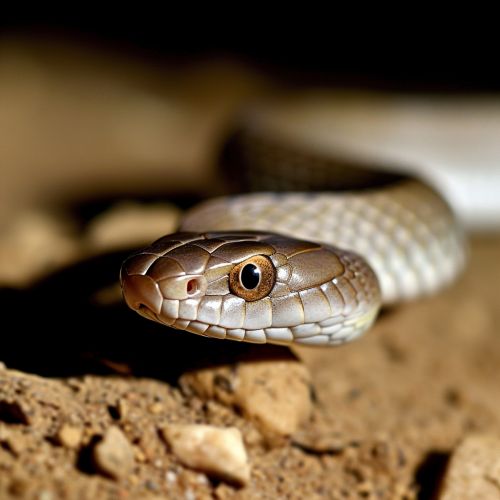Eophis underwoodi
Taxonomy and Naming
Eophis underwoodi is a species of snake that belongs to the family Ophidiidae. The species was first described by Caldwell in 1982. The genus name, Eophis, is derived from the Greek words 'eos' meaning dawn and 'ophis' meaning snake, indicating that this species is one of the earliest known snakes. The species name, underwoodi, is in honor of British herpetologist Garth Underwood.
Description
Eophis underwoodi is known from only a single specimen, a fragmentary fossil that includes parts of the skull and postcranial skeleton. The fossil is small, suggesting that Eophis underwoodi was a small snake, possibly no more than a meter in length. The skull is characterized by a short snout and large eye sockets, suggesting that Eophis underwoodi may have been a nocturnal species.


Distribution and Habitat
The fossil of Eophis underwoodi was discovered in the Kirtlington Quarry in Oxfordshire, England. This location was part of a warm, tropical environment during the Jurassic period when Eophis underwoodi lived. The presence of Eophis underwoodi in this location suggests that early snakes were able to inhabit a variety of environments, including tropical regions.
Paleobiology
The diet of Eophis underwoodi is unknown, but based on the size and morphology of the skull, it is likely that this species fed on small vertebrates or invertebrates. The large eye sockets suggest that Eophis underwoodi may have been a nocturnal species, hunting its prey under the cover of darkness. The small size and slender body of Eophis underwoodi suggest that it was a fast and agile predator.
Evolutionary Significance
Eophis underwoodi is one of the earliest known snakes, dating back to the Middle Jurassic period. The fossil of Eophis underwoodi provides important insights into the early evolution of snakes. The morphology of the skull and postcranial skeleton suggests that early snakes were small, slender animals with a short snout and large eye sockets, characteristics that are seen in many modern snakes.
